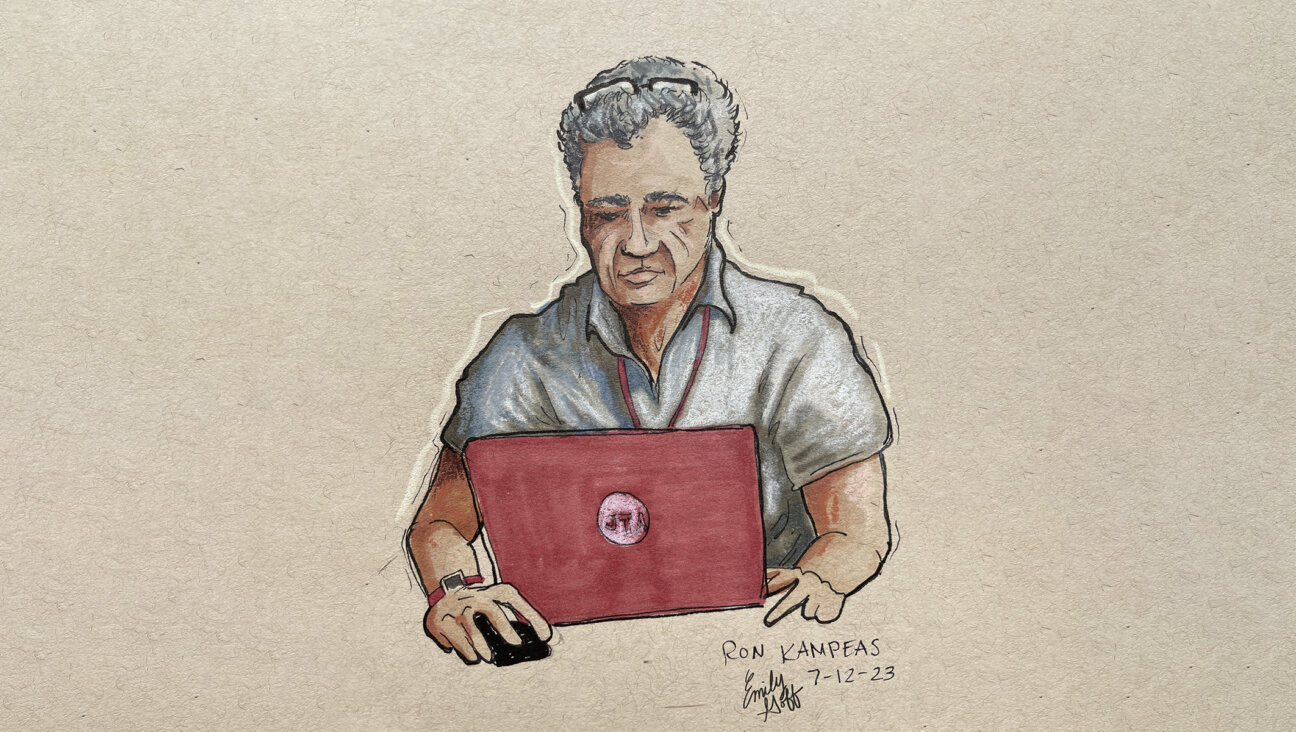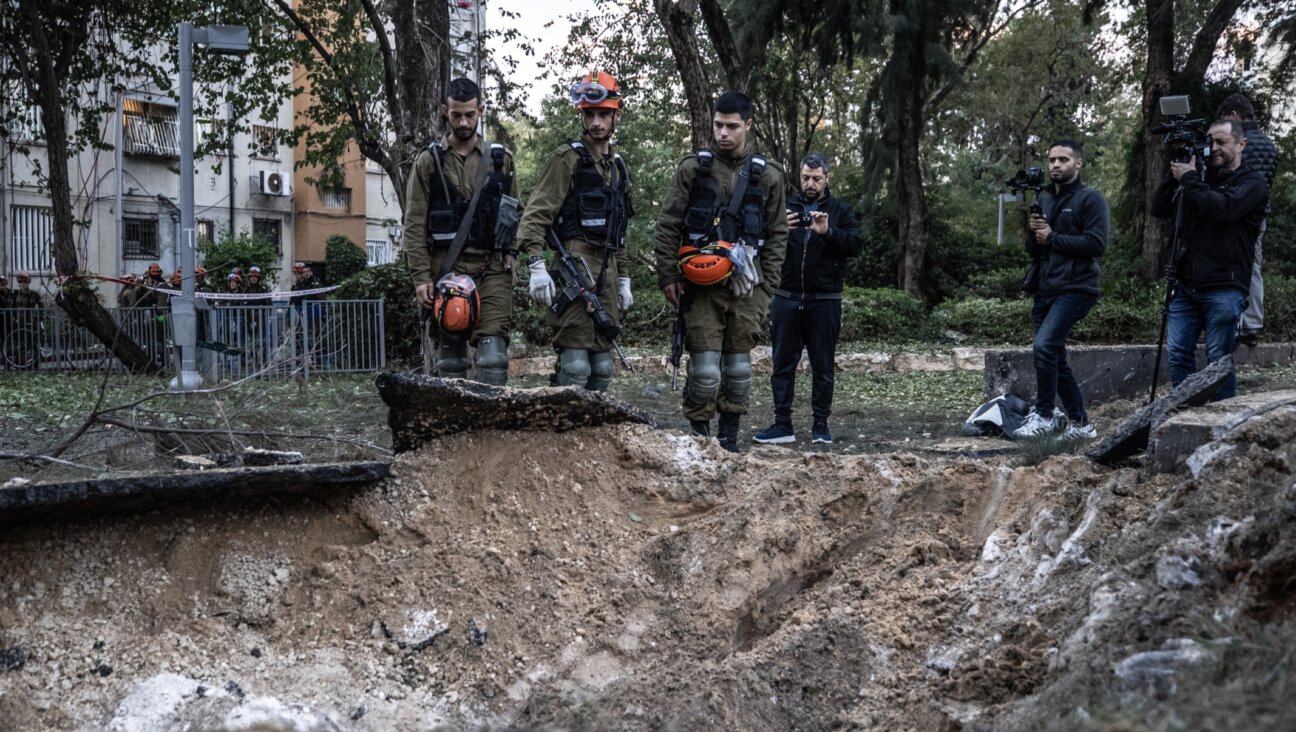How the Bible Became as American as American Cheese

Slouching Away From Bethlehem: Orlando’s Holy Land Experience is only one of the latest examples of how the Bible has become situated with an American context. Image by Getty Images
Our nation’s capitol is an exciting place in which to live and work. You never know who or what you’re going to come across. A famous face, the presidential motorcade, clusters of ordinary Americans dressed for all the world as if they were 18th century colonists come back to life in the 21st are the stock-in-trade of daily life in Washington, D.C.
Just the other day, while riding a crowded Metro, I found myself face-to-face with an elderly, spry woman who sported a hat so unusual that I broke with Emily Post’s rules of etiquette by staring at it for a good 20 minutes. (I would have stared even longer than that, but eventually I had to get off the train.)
At first blush (or glance), this choice bit of millinery appeared to be little more than a generic blue baseball cap with touches of orange here and there. But a second and more sustained look revealed a menagerie of small metal pins that covered — or, better yet, festooned — every inch of the hat.
Pins in the shape of bison, dolphins and other animals romped across its surface. They were joined, in turn, by pins that bore the miniaturized likeness of George Washington and Buffalo Bill, respectively, as well as by pins in the form of a tepee, a piece of cheese, and a pair of airplane wings.
It took me a few minutes to realize that what was on display was no helter skelter arrangement of pins, but a carefully crafted instance of folk art: a veritable landscape of Americana. Every time its owner doffed her hat, she proudly bore witness to the factors, both natural and man-made, that characterize the U.S. of A.
But wait, there’s more. Prominently displayed amidst this metallic salute to America was a pin of the Israeli flag in all its blue and white splendor. What’s more, this particular pin was not obscured or crowded in any way by its fellow pins; it enjoyed pride of place, and lots of empty space, on the right hand side of the hat.
When I first espied the Israeli flag pin, I thought I had misread it. When I realized that I had not mistaken it for something else, I began to wonder whether its presence in this sea of Americana was motivated by aesthetic considerations: The blue and white added a strong burst of color.
But no, that wasn’t it. The Israeli flag was affixed to the hat because its owner believed it belonged right where it was, among other bits and pieces of American history and culture — a visual testament to the longstanding relationship between America and the Holy Land, a relationship that rendered the United States as distinctive a culture as Native American tepees and chunks of Wisconsin cheese.
What was new and eye-catching here was the form and context in which that association was expressed. Ever since the early years of the republic, a persistent and lively biblical imagination has animated the American body politic. The hat was but the latest, and arguably among the quirkiest, of its iterations.
Way back when, Americans made a point of naming their newly established settlements after places mentioned in the Bible. By the mid-19th century, a map of the United States featured the likes of Ararat, North Carolina; Mt. Zion, Mississippi; and, appropriately enough, Canaan, Florida. Here was one way to ensure that the Promised Land enjoyed a new lease on life in the New World.
As the 19th century gave way to the 20th, Americans were no longer content to affix a biblical name to a place. They went further still by fabricating large-scale models of the Holy Land, replete with tour guides who, dressed in what was taken to be authentic biblical garb, would point out the sites. As an added bonus, some visitors, like those headed for Palestine Park in upstate New York, were given the opportunity to disport themselves in ancient dress.
Lest you think that the impulse to situate the Holy Land, let alone elements of the Bible, within an American context has diminished over time, consider the Holy Land Experience in Orlando, and the Biblical Tabernacle Reproduction in Lancaster, Pa. Deploying the most current and sophisticated technologies of display and simulation to enhance the biblical narrative, these two institutions draw contemporary visitors in droves.
According to its promotional materials, the Holy Land Experience “combines the sights and sounds of the biblical world in a unique and interactive way unlike anything else.” A full throttled re-enactment of the Last Supper as well as a replica of the caves in Qumran where the Dead Sea Scrolls were found are just two of its many attractions — so numerous, in fact, that they require a map of their own. Meanwhile, tourists considering a trip to the biblical tabernacle reproduction are told that “Biblical history comes alive at [its] full-sized reproduction of Moses’ Tabernacle,” where you get to see firsthand what went on within its hallowed and priestly precincts. “Even if you know little about Biblical history, this presentation is fascinating. But for those who know, this makes the story come to life.”
Importing the Holy Land into America’s consciousness, and keeping it there, is serious business. Sometimes, it takes a village. Or a road trip. At other moments, all it takes is a hat.
A message from our Publisher & CEO Rachel Fishman Feddersen

I hope you appreciated this article. Before you go, I’d like to ask you to please support the Forward’s award-winning, nonprofit journalism during this critical time.
We’ve set a goal to raise $260,000 by December 31. That’s an ambitious goal, but one that will give us the resources we need to invest in the high quality news, opinion, analysis and cultural coverage that isn’t available anywhere else.
If you feel inspired to make an impact, now is the time to give something back. Join us as a member at your most generous level.
— Rachel Fishman Feddersen, Publisher and CEO






















